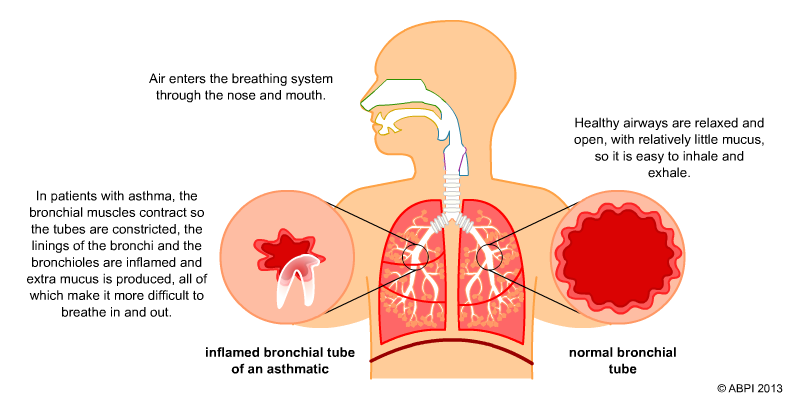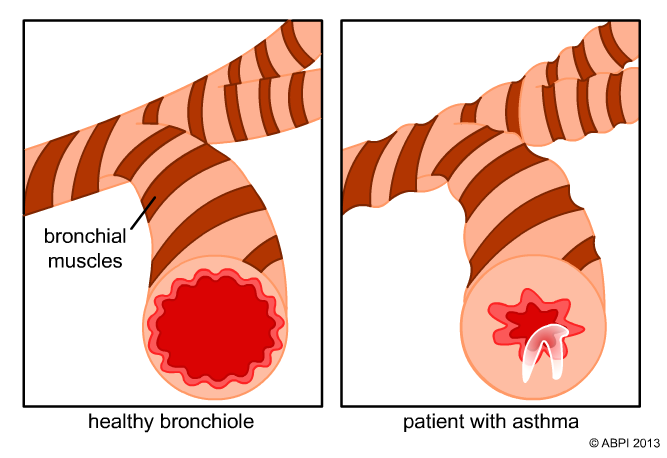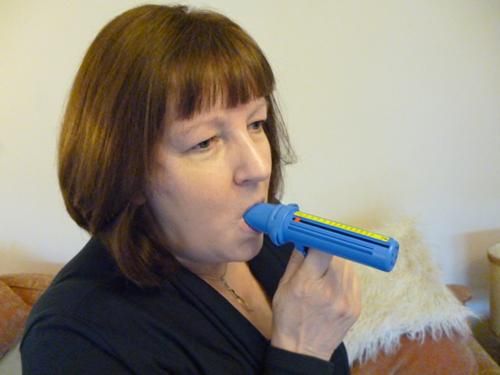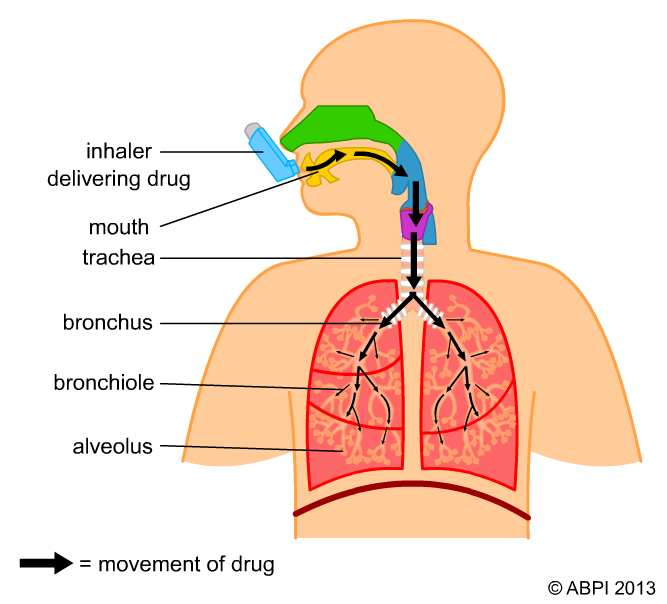This topic takes on average 55 minutes to read.
There are a number of interactive features in this resource:
 Human biology
Human biology
 Biology
Biology
 Physical education
Physical education
Asthma causes the airways of the lungs to narrow so people have difficulty in breathing. People with asthma have over-sensitive airways that become irritated by triggers such as pollen, house dust mites, pet hairs, exercise, smoke or even cold air. Asthma can also be triggered by stress. Someone who has asthma isn’t affected all the time. They may have attacks several times a day or only a few times a year.
During an asthma attack, the cells lining the bronchioles release chemicals called histamines. Histamines cause the lining cells to become inflamed, produce large amounts of mucus and swell. Histamines also make the muscles in the walls of the bronchioles contract. As a result of all these changes the airways narrow, making it very difficult to move air into and out of the lungs.

The changes in the bronchioles during an asthma attack can make it difficult to breathe

The contraction of the bronchial muscles squeezes the airways and constricts them.
Doctors can measure the effects of asthma attacks using a spirometer. The patient being tested breathes out as quickly as they can through a mouthpiece. The instrument produces a graph of the amount of air they breathe out and how quickly they do it (the Forced Expiratory Volume in one second or FEV1). A healthy person will be able to exhale over 75% of their total lung volume in less than a second. Someone affected by asthma or other lung conditions won’t be able to do this.

Graph comparing the FEV1 values of a healthy person and a person with asthma

Using a peak flow meter. (Photo credit: Ann Fullick)
People with asthma can also monitor their asthma using a simple instrument called a peak flow meter. This helps them to see how well their breathing system is working and adjust their medication if they need to.
Asthma affects many people. In the UK, 1 in 11 children and 1 in 12 adults are affected by asthma. That’s around 5.4 million people in the UK alone who are being treated for asthma by their doctors – and 1.1 million of those are children. The good news is that for most people their asthma can be controlled very well by medication and by managing your lifestyle. In fact a surprising number of sporting heroes have asthma, including Laura Trott who won two gold medals in cycling at the 2012 Olympics. Asthma medicines are delivered straight into the breathing system using an inhaler.
There are two main ways of treating asthma:
If people with asthma use their medication and make sensible choices about their lifestyles, they can often control their asthma well. This means they can enjoy an active, healthy lifestyle with very few asthma attacks.

Inhalers used to treat asthma deliver a measured dose of medicine straight to the areas where it is needed